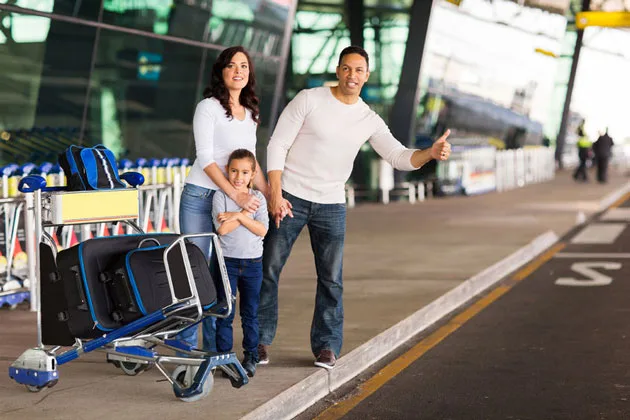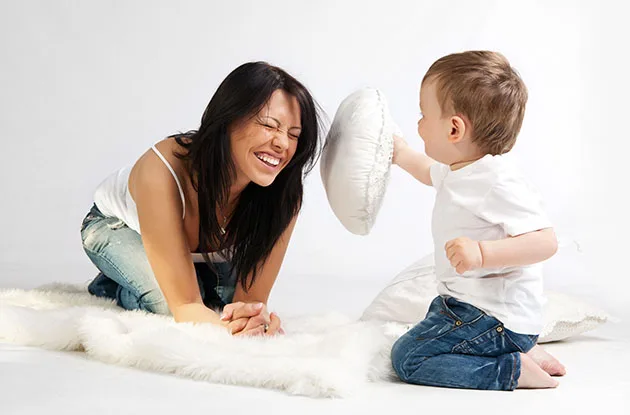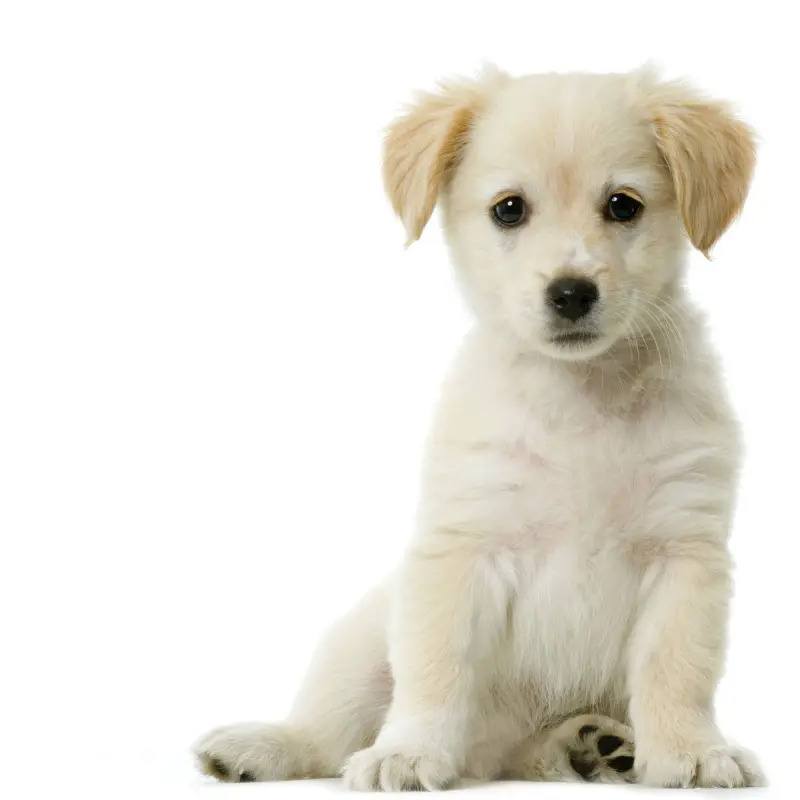You don’t have to look far to find a New Yorker who treats their dog like a baby, or at least like another pampered child in the family. We are certainly a culture that loves our pets. But when a “human” baby arrives on the scene, how can we make sure their furry siblings will adore the new addition as much as we do?
When Kari Harendorf offers clients advice on how to help their pets adjust to the surprise of a new baby, she knows exactly what she’s talking about.
The owner of East Yoga on Avenue B gave birth in July to a 7lb., 13oz. daughter named Karma, and she is still trying to help her four dogs get used to the idea of sharing their Gramercy Park apartment and their mom.
“They’re all doing really well,” Harendorf says of her four-legged caravan that includes Camille, a 10-year-old Rottweiler; Rosie, a 7-year-old Golden Retriever; black Lab mix, Penny, a 4-year-old Canadian Cur; and Charlie, a Huskie mix, who stars with her on a new Animal Planet show called K9 Karma, where she (with the help of Charlie) teaches a yoga class once a week where both pet owners and their dogs can participate — giving the “downward dog” position a whole new meaning.
“I believe in having a very dog-friendly environment,” Harendorf explains. “That’s why I opened my studio. I wanted to teach some place where I could have Charlie with me. The first time I took him to a class, he just lay beside me for two hours. Sometimes he’d be right underneath me on the mat. People would be hysterical because he would actually seem to mimic the poses we were doing. If we had to pose against a wall, he would put his paws against the wall; they were disappointed when he didn’t come to class. My boyfriend suggested I finally open up my own place.”
The Toronto native originally moved to New York to become an actress, but for the past three years has concentrated on yoga and her love of animals. Now with the TV show, she has married all of her passions.
On one episode of K9, Kari speaks to a woman about how she can introduce her newborn to her dachshund.
“The more you can include the dog in the new dynamic of the family, the easier it will be,” Harendorf explains. “You want to start before the baby comes home. What you don’t want to do, however, is set up the crib the day before the baby comes home. You want to put the crib and other baby things in the space where the dog can sniff it, especially in New York where space is limited and the baby may suddenly occupy a place where the dog had been before.”
Here are some more of Harendorf’s suggestions for helping make the transition easier on your pet:
• Washing the baby clothes you have and leaving them for the dog to sniff well before the baby arrives. “I started when I was seven months pregnant,” she explains. “I also have baby powder and a lavender lotion I had planned on using on the baby, so I also started to use them on myself so the dogs could get used to that odor. The least amount of new things in the house at the time the baby comes home will ease the transition. I have told people to take the dog for a walk with the stroller before the baby is born. If he gets used to the ritual of walking with a stroller, then you won’t have to worry about the dog tripping you and you can still have whatever routine you shared with the dog before the baby showed up.”
• Have someone bring the baby cap home from the hospital so the dog can smell it. “And don’t freak out if the dog has some sort of reaction,” Harendorf advises. “Sometimes, a dog will take it in their mouths and run away with it. That doesn’t mean the dog will try and harm the baby when they meet. He may just think it’s something you are giving to him.”
• Make arrangements for the dog as part of your birthing plan. If your husband or partner is going to be there for labor and delivery, you want to be certain someone the dog knows and trusts is with them. “My labor turned out to be 33 hours, and of course it was important to have someone the dogs felt comfortable with take care of them,” she says. “This is going to be just as stressful for your dog as it is for you and your spouse. When my water broke, Charlie was freaked out and wouldn’t let anyone near me at first. He saw me in pain and then I was gone (to the hospital). Think about how scary that could be for them.”
• Have a third person introduce the dog to the baby when you come home. When Kari came home from the hospital with baby Karma, she had a friend waiting at her home who could come out and take the newborn from her so she and her husband could go in the house for a reunion with the dogs first. “We had a nice greeting for 10 minutes, and then my friend brought the baby in the house,” she says. “The dogs hadn’t seen me in two days, and if I had walked in holding the baby, I would have had to push them away. You don’t want the dog to already think he has been replaced. After Karma came in the house, we put the car seat in the stroller, which was at eye level for the dogs. They put their head in there and sniffed her, and one even licked her!”
While that would be enough to cause a coronary in some new parents, Kari says that she wasn’t nervous because she knows her pets.
“Of course, you must never leave a dog alone with a baby and you have to trust your own instincts and know your dog,” she says. “And even as the child gets older, you have to be diligent about monitoring your child with the dog. You also have to remember that a toddler could hurt the dog as well. But you also don’t want the dog to suddenly feel like he has been replaced.
“I had one client who shut the door whenever she fed the baby. If you don’t want the dog next to you when you feed or change the baby, I would suggest using a baby gate where the dog can still see exactly what’s going on.”
The most important thing is to still find the time during your new and very hectic schedule to show a little undivided love to your pet every day. “It’s amazing how far five minutes of attention will go,” Harendorf advises. “They won’t feel like they don’t matter any more, and will actually like being around the baby. Also say ‘hello’ to the dog first when you walk through the door if you can.
“Hopefully you will cultivate a relationship between the dog and the child. The dogs have to build a trust and your child needs to gradually learn to respect the dog as he or she gets older. It’s a living, breathing creature. Sometimes dogs don’t want to be bothered — just like us. The dog has that right, too, and if you teach your child that respect, you can all live in harmony for a long time.”
Which breed is best?
You’re thinking about adding a puppy to the family, but which breed is best?
Peter Cervi, owner of Camp Canine on the Upper West Side, advises some careful thinking, in advance. “Who is going to be responsible for what with your new pet” is the question parents should first consider, he advises. “A dog is not much different from a child,” he points out. “They can be an enormous source of love and affection, but they will also require the same in return! Proper diet, regular exercise, and possibly some basic training are essential. A dog is an investment. If you put the time and attention into your pet, you will have a wonderful experience with your dog, and the rewards will be immeasurable.”
Choice of breed “should depend on your family and its activities,” Cervi advises. “Obviously, if your family is active and prefers outdoor activities, the logical choice would be a larger, more even-tempered, playful dog — like a Labrador or Golden Retriever.
“But if your family is less active and prefers indoor activities, then a smaller, ‘lap dog’ would be preferable, and certainly more portable.” Small dogs usually great with kids include: shih tzus, lhasa-apsos, Maltese, bichon frises, pugs, and French bulldogs.
But Cervi says there are many child-friendly breeds to consider — the kinds of dogs known for their even tempers and predictable natures. The best way to do your homework, he says, is to pick up the American Kennel Club’s The Complete Dog Book (now in its 19th edition; $24.70. Available online from www.akcstore.org). This is the ‘dog bible’, he explains; it contains information on hundreds of breeds, with personality type and care needs.
Finally, he says, “owning a pet, especially a dog, in New York City is unlike having a dog in most other parts of the country. It can be quite complicated and comes with many responsibilities — along with enormous joy and numerous rewards.”
— A.H.





















